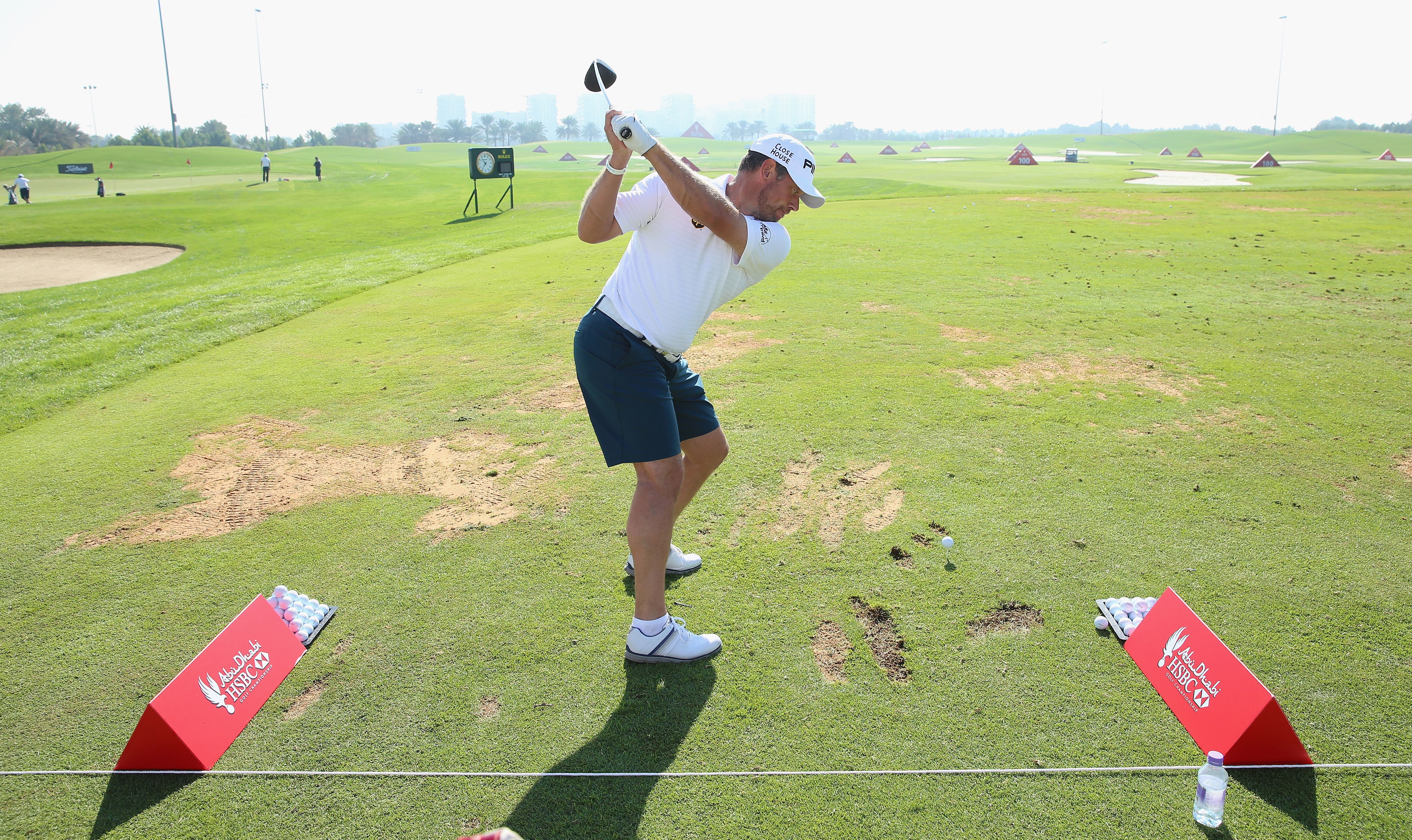Enough Already! 10 Bad Habits You Need To Change
Posted by GolfBox on 7th May 2024
Exorcise these bad habits from your game and put an end to your on-course disenchantment!
1. Not taking enough club
For those who once carried their seven iron 190m… enough!
Many golfers continue to calculate stock distances and make club selections based on that one maxed-out, outlier shot they’ve never been able to repeat since. For the sake of better golf, stop overestimating and under clubbing!
Dial it back and swing easier with more club, especially if you’re not warmed up yet, and you’ll start finding the sweet spot of the face far more often. Debating whether it’s an easy 7 iron or maxed out 8? From now on, the right answer should always be: pull the 7 iron.
2. Dirty grooves
Dirty grooves just aren’t cool on the golf course! No, not the earworm kind (although shoutout to Rocco Palladino’s indelibly dope basslines, which will surely improve your rhythm!). We’re talking about the bad habit of clubface uncleanliness.
Grooves on golf clubs aren’t designed to be filled in with dirt and mud. If they were they’d be called ridges! Wipe the clubface with a towel after every shot to keep your grooves clean and clear. Or purchase a groove cleaning tool to scrape out any long-term, caked-in detritus.
You won’t believe the difference clean grooves will make. Spin, speed and accuracy will improve so much, you’ll never be a grubby golfer again.

3. Beating balls aimlessly on the range
There’s no denying that practice is fundamental to improving your golf game. But not all practice is equal. Head to any driving range and you’ll see golfers armed with a driver, mindlessly smashing ball after ball as far as humanly possible.
Yes, it’s fun. But will it help you shoot lower scores? Not really. Golf is a game of nuance and variety. To maximise your practice time, you’ll need to… practise with a plan.
At the range, focus on a specific target/distance rather than blasting away. And try not to hit the same shot more than twice in a row – mix it up between straight shots, fades, draws, high shots and low shots, just like you would during a round.
Switching regularly between long and short targets will also mirror what you’ll encounter on the course, so don’t be afraid to change clubs frequently. And always adopt your pre-shot routine at the range. Backing off after every shot will ensure you reset just like you would out on the course. Practising with a plan will better prepare you for a round on the course.
4. Playing golf swing, not golf
For the love of golf… stop obsessing about your swing and start playing the game!
A common trap golfers fall into is focusing so intensely on swinging it “correctly” that they forget the objective of the game: to get around 18 holes in the fewest strokes possible. Now, there’s nothing wrong with honing correct technique to make you a better golfer. But golf is more of an artform than a perfect science.
Not even peak Tiger Woods, circa 2000, swung it perfectly every time but he still played the best golf in history. So don’t get sucked into overthinking your swing: one simple swing thought is all you should bring to the course and don’t get caught up in mechanics when you do make a poor swing.
Instead, play the game and never neglect your chipping and putting: more than half the shots you’ll take during a round are on or around the green.

5. Overambitious pin hunting
Taking dead aim and knocking down flags with aggressive approach shots is alluring, especially when it results in a tap-in birdie. But going for it all the time will inevitably cost you shots.
The best pros in the world rarely take dead aim at a pin; it’s centre of the green most of the time, unless they have a perfect number and the rewards outweigh the risks. Adjusting your approach shot strategy will help you avoid a big number when you don’t strike it out of the centre of the face.
Start playing away from the pin more often and only go flag hunting when it makes perfect sense.
6. Steering the ball
Every golfer on earth has been guilty of trying to nurse one down a narrow fairway or into a tight green. It is a very bad habit: the body stops turning, the arms take over and rhythm and timing become a blathering mess.
But strangely, no-one ever seems to steer it on the driving range. Golf has a habit of infecting the mind and whenever doubts begin to creep in, or confidence is low, golfers start steering it quicker than Max Verstappen at Monza.
The solution is to wholeheartedly commit to every shot and focus on the process, rather than the outcome. Hitting shots with intention and total commitment will help break this confidence-killing bad habit.

7. Letting a bad shot/break get to you
The red mist that descends after a bad shot, or bad break, is a deeper shade of scarlet in some golfers than others. But whichever category you fall into, ruminating on your bad luck or poor shot choice inevitably makes things even worse.
When things aren’t going your way out on the course (which tends to be the rule rather than the exception btw) it’s easy to get down on your game and yourself. The key to breaking this bad habit to simply accept that golf is hard. The ball will go sideways sometimes, and the putts won’t drop all the time.
Changing your outlook will reframe your emotional response to adversity and increase your resilience. And that's the palate cleanser that will prevent you from compounding a silly error with further brain fades on subsequent holes.
8. Playing long irons
Back in the day, the measure of a golfer’s talent was just how far and high they could hit their long irons. And we’re talking those nasty one, two and three irons, which for an average golfer were the stuff of nightmares.
Then hybrids came along. Golfers soon realised that they were easier to hit, longer and more accurate - from all kinds of lies, too. Unless you’re a top ball striker who likes to show off, ditch your long irons for hybrids. Your game will thank you for it.

9. Attempting to ingrain swing changes at full speed
Working on a new golf swing move but getting nowhere? Trying slowing things right down. And when we say slow, we mean at a glacial pace.
Given a golfer’s backswing takes about 0.8 of a second to complete and the downswing is over in less than half that time, there’s really not much time to ingrain a completely new feel at regular speed.
Changing the muscle memory of a golf swing becomes so much easier without time constraints. Try making an ultra slow-motion swing without a ball to nail the move, then work up to half speed swings with a ball. Don’t worry about where the ball goes; focus on completing the move successfully.
You’ll ingrain the new feeling much quicker and if you’re having issues, just wind back the speed dial until you’re comfortable. Slow and steady always wins the race!
10. Not using the bounce on your wedges
Solid wedge play is a key to becoming a better golfer but there’s a shockingly bad habit that stops many golfers in their tracks. To become a good wedge player, solid and consistent contact is essential. However, few golfers really understand how to use the bounce on their wedges.
Bounce is the angle of the club’s sole in relation to the leading edge. It’s there to help you slide the wedge under the ball and make crisp contact, get the ball up in the air and generate spin. Getting a feel for the bounce and learning to use it will help your game. And trusting it will help you avoid blading the ball thin or chunking it fat.
To feel the bounce and begin using it, open the face of your wedge up by five degrees and don’t be afraid to thump the turf behind the ball. You’ll soon gain a sense of what bounce can do for you and experience the forgiveness it can provide.

